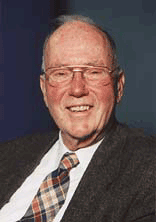Townes Post-Doctoral Fellowship in Experimental Astrophysics and Space Physics
Space Sciences Laboratory, University of California at Berkeley
 The Charles H. Townes Fellowship is a Prize Fellowship in Experimental Astrophysics and Space Physics at the Space Sciences Laboratory at UC Berkeley. The fellowship offers recent Ph.D. recipients the opportunity to pursue independent research projects, in part by being granted Principal Investigator status at UC Berkeley for the duration of their fellowship.
The Charles H. Townes Fellowship is a Prize Fellowship in Experimental Astrophysics and Space Physics at the Space Sciences Laboratory at UC Berkeley. The fellowship offers recent Ph.D. recipients the opportunity to pursue independent research projects, in part by being granted Principal Investigator status at UC Berkeley for the duration of their fellowship.
It is expected, however, that the recipient will work closely with one of the established experimental research groups at UC Berkeley, taking advantage of existing facilities and resources. Applicants are strongly encouraged to contact the research group with which they are likely to be associated. While the focus of the Townes Fellowship is primarily instrumental, strong observational components to the proposed research program are encouraged. Fellowships are awarded for two years, with a possible renewal for a third year.
The annual salary is $60,669 with an additional research fund of $5,000 per year. Health benefits are included for Fellows and their dependents. The applicant must have the support of a sponsoring research group. Financial support for the Fellowship will divided equally between the Space Sciences Laboratory and the sponsoring research group
Past Townes Fellows
–Nils Halverson (2003) Associate Professor, University of Colorado, Boulder
Cosmic Microwave Background; collaborating on the South Pole Telescope and POLARBEAR; millimeter-wavelength detector development projects with NIST.
“I’m grateful to have received the Townes Fellowship…”
–Cornelia B. (Trixie) Wunderer (2003), Scientist, DESY, Hemholtz Alliance, Germany
–Daniel Harbeck (2004), Associate Scientist, WIYN Observatory, Kitt Peak, AZ
Instrument Scientist for the One Degree Imager
–Nat Butler( 2005), Assistant Professor, Arizona State University
Astrophysical transients in the optical, IR, X-, and Gamma-ray emission from Gamma-ray Bursts (GRBs), in order to potentially use GRBs as cosmology probes; as an experimentalist, focusing on robotic telescopes, data mining, and novel technologies for transient detection and followup.
–Matthew Muterspaugh (2006), Associate Professor of Physics and Astronomy at Tennessee State University; Director of TSU’s 2-meter Automatic Spectroscopic Telescope
Exoplanets; Stellar Astrophysics, using both robotic spectroscopy and long baseline optical interferometry.
” The Townes Fellowship was probably the most significant experience in my career. The ability to be PI on grants was one of which I took advantage, and as a result led to further career opportunities. In fact, my first successful grant proposal was being co-PI on a grant led by Dr. Townes himself. I will always be thankful for the monthly lunches Dr. Townes and I shared, during which he shared his tremendous wisdom about science, research, careers, religion, and life. My wife also appreciated her opportunities to know Frances.”
–Andrew Howard (2007)
Exoplanets, especially detection and characterization of near Earth sized; instrumentation for Doppler measurement with precision echelle spectrometers; SETI in optical and near IR
–Nicolas Barrière (2008), Scientist, X-Ray Optics Specialist; Cosine Measurement Systems
Leiden, Netherlands
Nuclear astrophysics: Type Ia supernova, origin of Galactic positrons; compact objects: black
hole and neutron stars binaries; develop focusing instruments for high-energy astrophysics
–-Aaron Parsons (2008), Assistant Professor,UC Berkeley Astronomy Department
Birth and early evolution of the first stars and galaxies, using custom-designed radio interferometers.
“I’m thankful for… effort working to secure Charlie’s legacy, and for expanding the Townes Fellowship.”
Observing and characterizing turbulence and intermittency in Earth’s stratosphere; data processing of thermal ions in the solar wind, especially those from the Wind spacecraft’s SWE and 3DP; developing flight software for the GRIPS high-altitude balloon.
